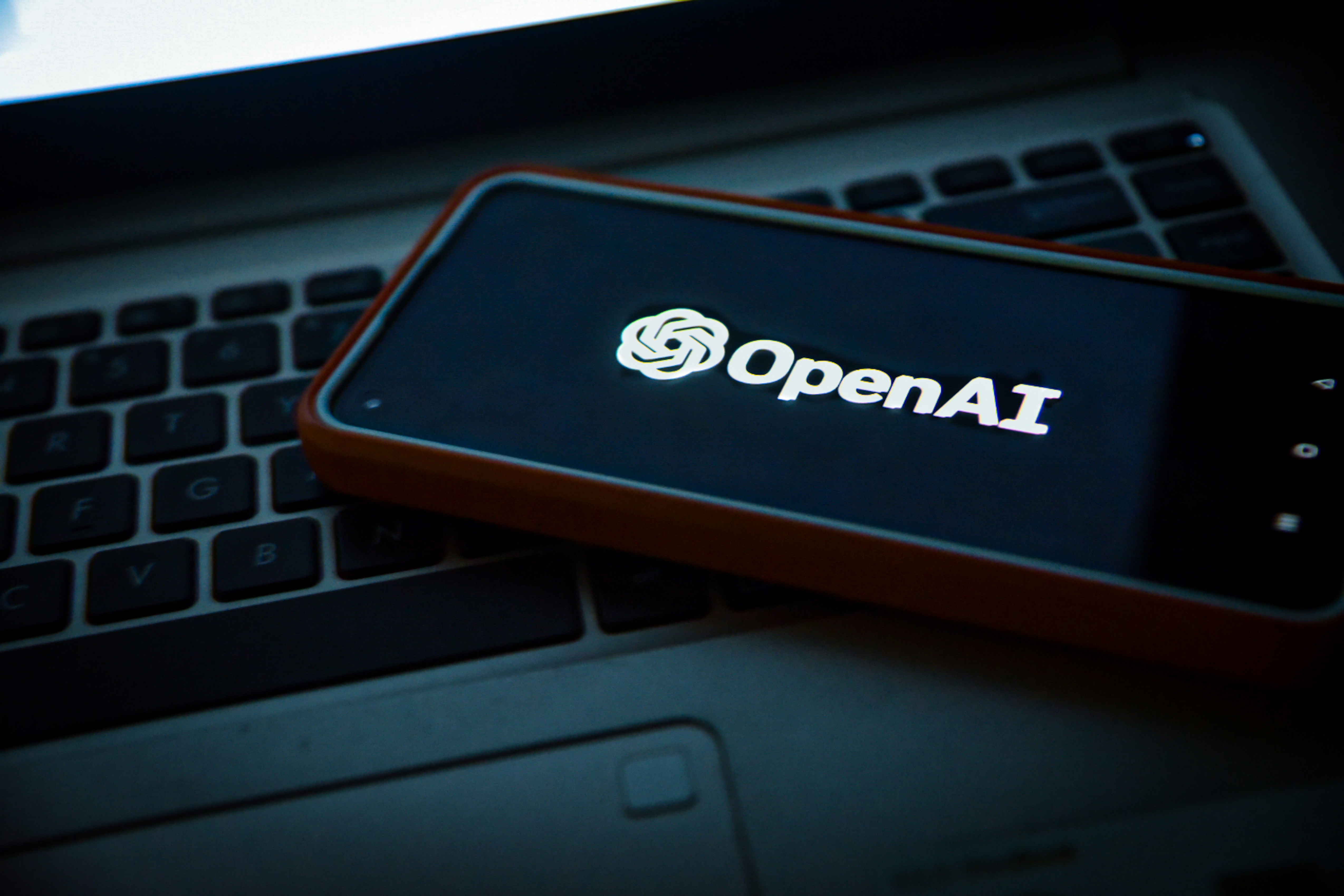Our Portfolios
Explore our innovative solutions and successful implementations
Harness the power of AI, Full Stack Development, and Scalable Cloud Solutions to turn your vision into reality.
Trusted by 50+ happy clients
Build your MVP or AI tool — without hiring a team. I turn founder ideas into working products. Fast. Quiet. Focused.
You bring the vision. I scope it, prototype it, and deliver a working MVP using no-code, low-code, or custom stack — within 30 days.
Want to build a GPT-4-based tool? Langchain experiment? Internal AI bot? I build fast, functional AI tools with practical business use-cases.
Join 1000+ businesses worldwide using intelligent WhatsApp bots to automate customer support, boost sales, and provide 24/7 assistance. No coding required!
Always Online
👋 Hi! I'm your AI assistant. How can I help you today?
9:30 AMI need help with my order
9:31 AMSure! Please share your order number and I'll check the status for you 📦
9:31 AMExplore our innovative solutions and successful implementations
[ Power Your Business with Generative AI and AWS Infrastructure ]
Generative AI (GenAI) is transforming industries by enabling businesses to automate, innovate, and streamline processes. At Skugal, we help you build a scalable infrastructure on AWS that leverages the full potential of GenAI.
Use AWS services like SageMaker for personalized recommendations, Lambda for automating content creation, and EC2 for managing inventory efficiently with AI-driven predictions.
Skugal can help you use AWS services like SageMaker and HealthLake for AI-assisted diagnostics, patient care personalization, and automating clinical trial data analysis.
Automate fraud detection and financial reporting with AWS services like Lambda for real-time processing, SageMaker for AI model deployment, and RDS for secure data storage.
Streamline content creation and media workflows using AWS services like SageMaker for AI video editing, Lambda for automated media workflows, and S3 for scalable media storage.
Enhance your operations with AI-driven predictive maintenance using AWS IoT and SageMaker for optimizing production processes and supply chain management.
Automate document analysis, contract review, and legal research with AWS services like Textract for document processing, SageMaker for AI model deployment, and Lambda for automation workflows.
AWS provides scalable, secure, and flexible cloud services to support your GenAI infrastructure. At Skugal, our AI agents help you deploy models, automate tasks, and scale your operations seamlessly on AWS.

Transforming businesses with autonomous agents and AI solutions



At Skugal.com, we rethink how work gets done. Our autonomous agents don't just follow scripts — they understand context, make decisions, and adapt on the fly. We build intelligent automation into your workflows to reduce manual effort, eliminate bottlenecks, and create systems that optimize themselves over time.
From administrative tasks to customer support and data processing, our agents integrate deeply with your existing tools and processes — learning as they go, improving efficiency, and freeing your team to focus on high-value work.
Starting a SaaS product can be daunting, but with Skugal.com, you're never alone. Our AI agents and expert network are here to support your journey from idea to scale.
Skugal offers powerful AI agents that act like your extended product and strategy team. From validating ideas and drafting user stories to refining pricing models, our agents help you move faster and smarter—every step of the way.
Leverage our partnership with AWS to obtain valuable cloud credits that can help offset your initial infrastructure costs. Our AI agents can also guide you on how best to utilize these credits for performance and cost-efficiency.
Get started on Google Cloud with exclusive credits. Our AI agents assist in identifying the most effective services to power your SaaS solution, helping you build with confidence and clarity.
Need help setting up your backend or choosing the right architecture? Our AI agents provide intelligent suggestions tailored to your product's needs, helping you create a scalable, secure foundation—without the DevOps complexity.
Scale your SaaS intelligently. Our forecasting agents analyze your user patterns and product evolution to suggest the right time for upgrades, optimizations, and cost control—so you stay one step ahead.
Scale your SaaS intelligently. Our forecasting agents analyze your user patterns and product evolution to suggest the right time for upgrades, optimizations, and cost control—so you stay one step ahead.
Discover how we've helped businesses transform their digital presence and achieve remarkable results
Hermann IT Solutions
Abhishek has been a great help. He always answered messages very fast and communicated professionally. He was always very flexible about when to work and when to have a call. He did not only help with implementation, but also understood the goal after our first discussion and designed a solution draft very quickly. He had no problem with collaborating on the code implementations, but also worked well on his own Would always recommend.
N8N-based AI Agent for Meeting Summaries
Quick in execution and very knowledgeable about the latest in AI development. Abhishek has the ability to propose alternative solutions to a problem. He stays accountable to the outcomes agreed as part of the project. Certainly recommended!
Scrapy and ScrapeOps Developer at Dark Patterns Lab
Abhishek is a truly great developer and shows fabulous technical and leadership skills.
AWS Lambda Developer at Analytical Call Tracking
Abhi and his team are very experienced with AWS serverless and I highly recommend him.
CEO at Contech Media
Working with Abhi was a game-changer for our business. His expertise in AWS and full stack development is unparalleled.
CTO at Halo Solutions
The custom solutions provided by Skugal.com have significantly improved our operational efficiency and client satisfaction.
Founder at Skugal
Abhi's deep knowledge in blockchain and AWS services helped us scale quickly and efficiently.
Senior DevOps Engineer at Hexmount LTD
Helped me point out what was wrong with our Terraform very quickly. Thank you, Abhishek!
Certified AWS Developer
Working with the Freelancer is a joy. He is extremely skilled and takes the time to work with clients, understanding the requirements and delivering the best possible solutions.
AWS / Cloudfront Specialist
Excellent skills and prompt response. He was very capable and able to handle the AWS S3 CDN systems along with troubleshooting several difficult aspects of the projects.
AWS Rekognition / ReactJS Developer at Halo Solutions
Great comms and commitment to getting the project finished well. Will definitely use again.
Software Development Engineer – AWS Bedrock & Bedrock Agents
Abhishek has been nothing short of outstanding. He joined our team at a critical time and demonstrated a rare blend of technical excellence, strategic thinking, and ownership well beyond expectations.
AI Agents Development for Company Research and Lead Generation
Abhishek is an excellent colleague to work with. He has got great handle over AI agent development and I highly recommend him for building projects around AI agents.
Agentic AI System with LangGraph and RAGgraph
Abhishek is a responsible person. He has good work ethics and completed the job successfully. Your technical expertise, commitment and dedication shows that have done a great job.
Automation & FullStack JS Dev for Game Company
Smart fast and good! Abhi is top notch with excellent skills in automation and full-stack development.
Let's discuss how we can help bring your SaaS vision to life with cutting-edge technology and innovative solutions.